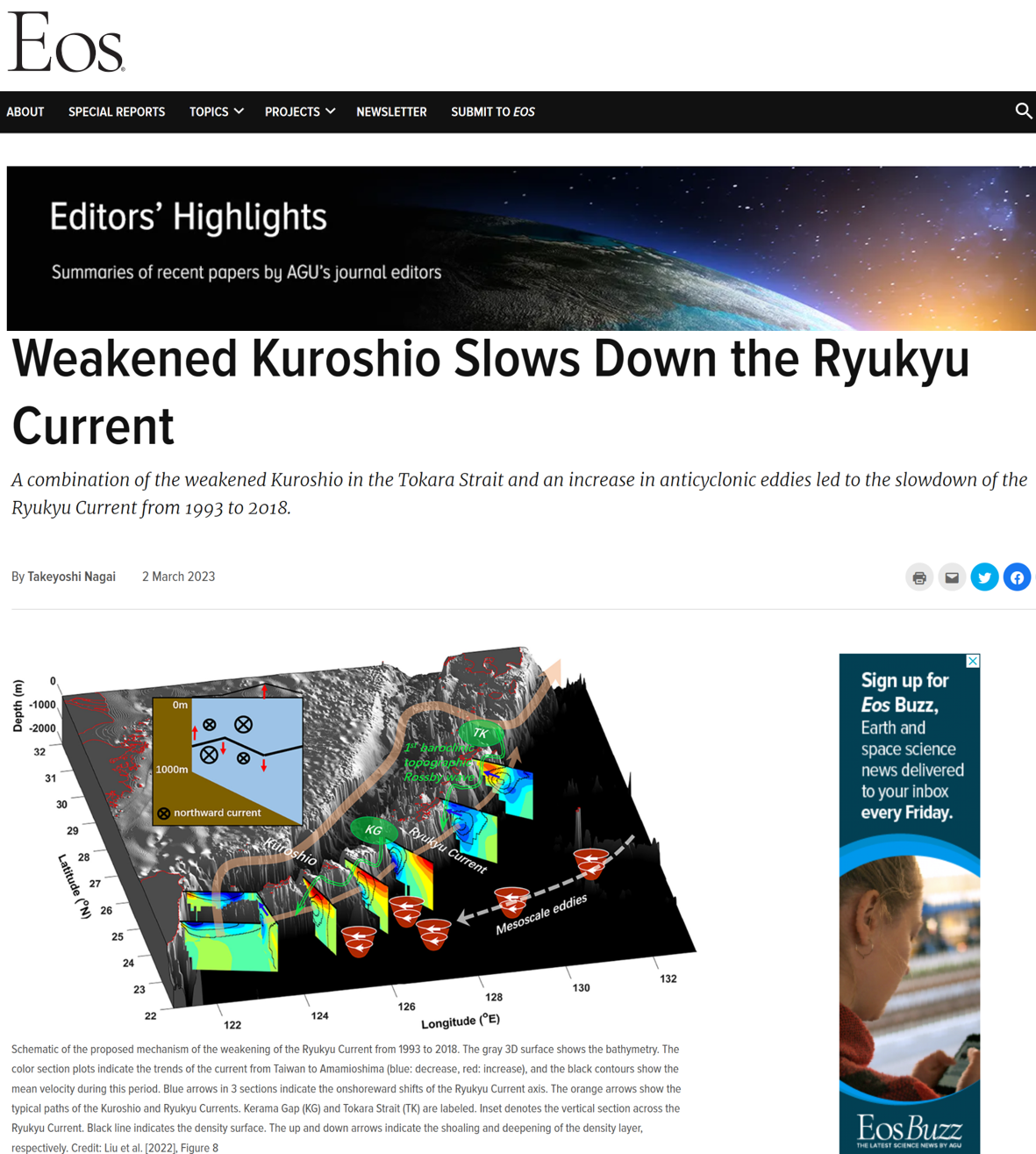News

On March 2, the Research Results of the Response of Ryukyu Current to Climate Change of Liu Zhaojun, Associate Researcher of the SIO, were reported in the form of Editors’ Highlight on the Journal of the American Geophysical Union (AGU), Earth & Space Science News (EOS).
EOS is an authoritative platform of cutting-edge information sources in the global earth and space science research field. Its Editors’ Highlights specially report important research results in Journal of AGU, and less than 2% of papers published in the Journal of AGU are reported in this way.
Ryukyu Current is a special western boundary current of North Pacific Ocean, with a unique subsurface current structure. It extends northeast along the Ryukyu Island chain and finally merges into the Kuroshio in the south of Kyushu Island, Japan. Ryukyu Current, like Kuroshio, plays a crucial role in the global water, heat and material cycles, and can invade the East China Sea through the key strait of the Ryukyu Island chain, affecting the water exchange process between the East China Sea and the North Pacific Ocean, and even the Kuroshio of the East China Sea. The editor reported with the title “Weakened Kuroshio Slows Down the Ryukyu Current”, and it was evaluated in “Editors’ Highlights” that “with the global warming, many ocean currents show an increasing trend. However, the Kuroshio of the East China Sea slows down during the stagnation of global warming. This study revealed that the weakening of the Kuroshio in the Tokara Strait and the increased anticylonic vortex on the east side of the island chain will slow down the Ryukyu Current”.
This achievement was published on Journal Geophysical Research: Oceans in December 2022. The first author of the paper is Researcher Liu Zhaojun of the SIO, and the co-authors include Researcher Zhu Xiaohua and Associate Researcher Zhu Zenan from the SIO, and Professor Hirohiko Nakamura from Kagoshima University in Japan.



